The Renault Arkana’s design has plenty of street presence as well as including that much sought after hybrid technology which certain customers are hunting, especially during fuel crises. On offer there’s both mild hybrid and full hybrid petrol power plants.
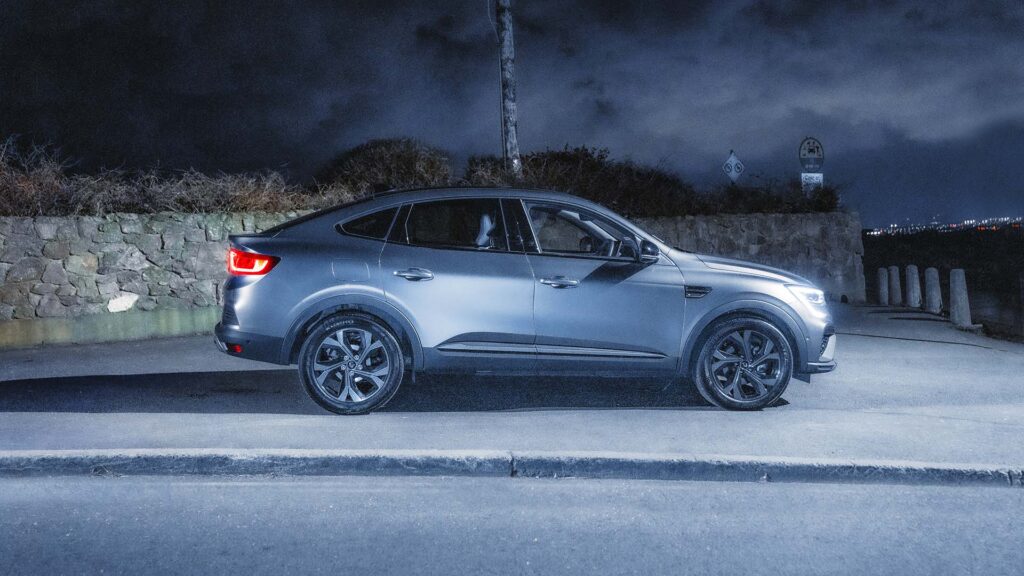
Special mention : Keyless entry is faultless. Solid family runabout that’s economical to run. Eco is not as muddy a setting as in most cars and Sport is handy for a quick nip. Very pleasing texture on the steering wheel. Great visibility. Safety systems don’t interfere in the driving experience. Apple Carplay picks up where you left off (no radio blasting at high volume on startup).
Needs work : Due to the hybrid energy regeneration, it feels like you’re constantly pushing the accelerator as opposed to just resting your foot on it.
| BHP 145 | Hybrid / Petrol / Auto |
| 0-100 km/h in 9.8 seconds | Road Tax €120 |
| RS Line Price: €35,140.00 As spec’d Price: €37,190.00 | Boot space 480 / 1,263 litres |
The inside comes with that touch of extra cabin quality showing how Renault are climbing the premium feel stakes in this sector… while charging not too much extra. The result is a polished SUV and for this segment, and for families and the retired, crossovers are where it’s at. This particular niche is evolving into tall vehicles with coupe-like rooflines. The Arkana is positioned as a five-door compact SUV which offers lots of space up front. The choice of hybrid tech in two flavours all for a bit less than a similarly sized regular compact to midsize SUV is a welcome option for buyers.
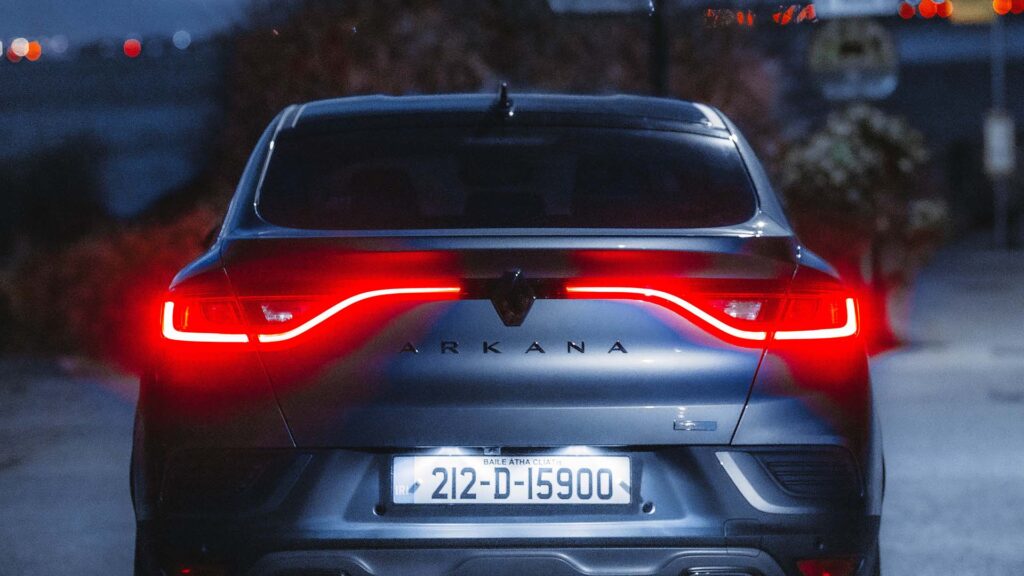
The Coupe/SUV concept has caught on for smaller crossovers and the SUV/Coupe has largely been the preserve of premium brands, and almost exclusively German ones up until recently. So is this French contender the car that customers in this segment didn’t know they wanted?
From certain angles it can look a little disjointed from others it’s surprisingly elegant. The rear three-quarter view is where the Arkana is most distinctive. The lower body retains its width and kicks up over the rear arches which gives it a muscular look. The RS line trim adds a different bumper, there’s also a skid plate plus twin exhaust pipes and a small lip spoiler which changes the car’s appearance quite a bit. As well as it is kitted out, it’s still worth comparing the appearance of the various trim levels.
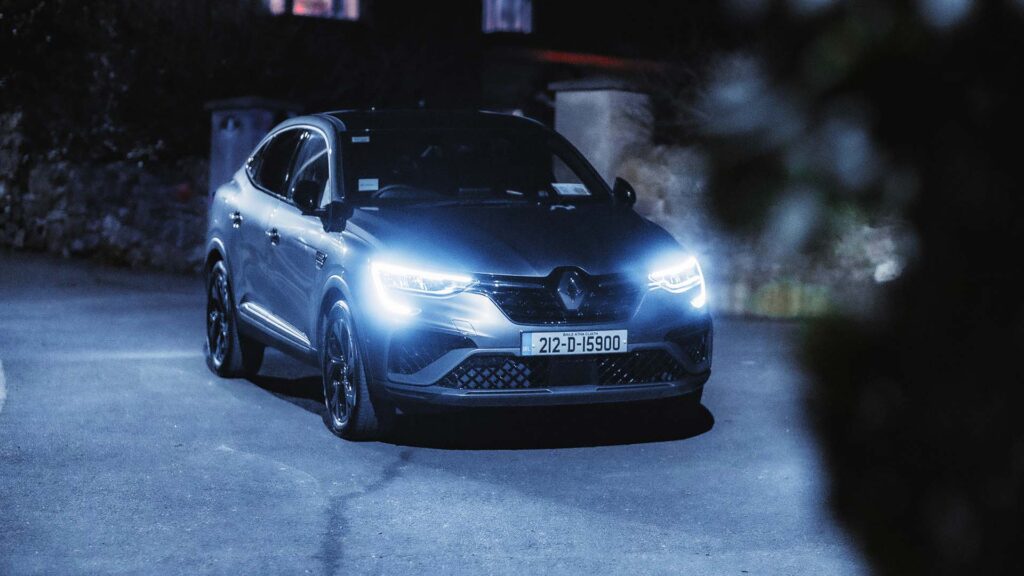
Inside it’s all very new era Renault with a dash of extra design. If you stretch to the top RS line variant, it’s certainly enough to make rivals such as Toyota’s CHR and the Volkswagen Tiguan seem so much more dull in comparison. The RS cabin is specced out with ambient lighting strips, a larger central portrait style screen and plush faux leather and fabric or suede style upholstery. The decor on the doors and on the mid-level part of the fascia is also trim specific. Some come with a carbon fibre effect finish as well as some nice design touches like the knurled ventilation dials which sit below smart piano style switches on the centre stack.
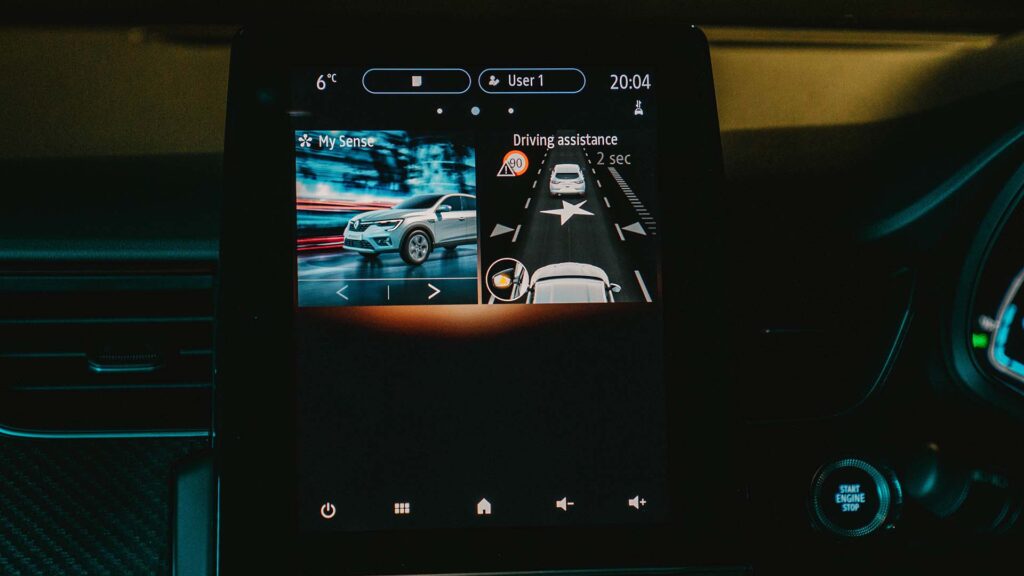
The portrait easylink central infotainment screen sits in the middle of the dash. As usual with these kinds of monitors there’s a choice of home screen formats, either a split screen typically divided into nav, radio and phone sections or a display with icons for nav, radio, music, phone apps, car info and settings. There’s a lot of detail particularly in the driving assistance and the multi-sense menus and of course you get Apple Carplay and Android Auto smartphone mirroring.
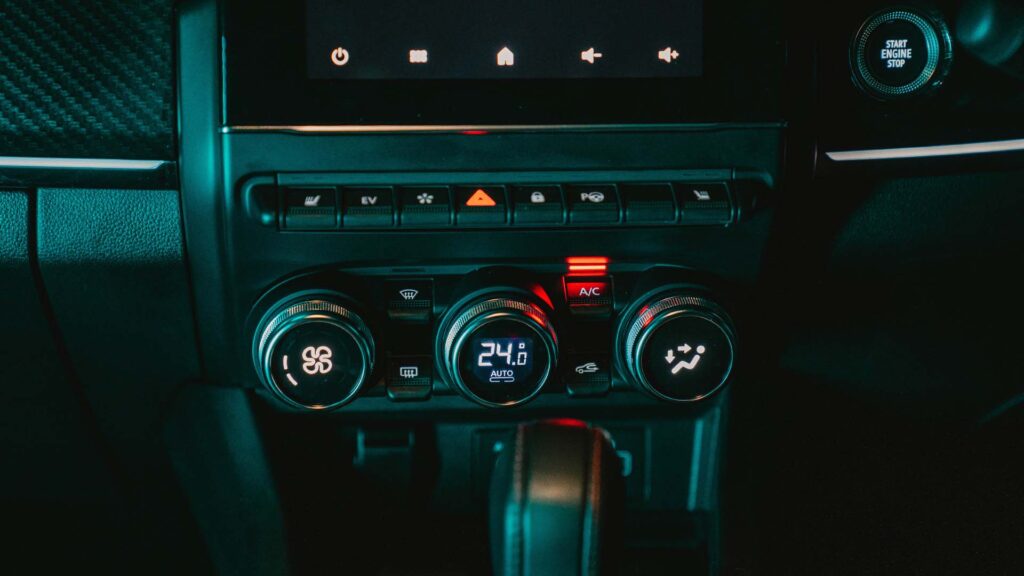
Visibility is very good all round thanks to the low window line and the slightly higher than expected driving position. It’s also further helped by the standard rear camera and the all-round parking sensors. The quality of the materials also feel better than the class average while build quality matches the smarter ambiance. Similar to premium brands, the door handles and the paddle shifters feel substantial and the steering wheel is covered in pleasant touch materials. The plusher versions are covered in perforated leather and are stitched to match the door cards and the seats.
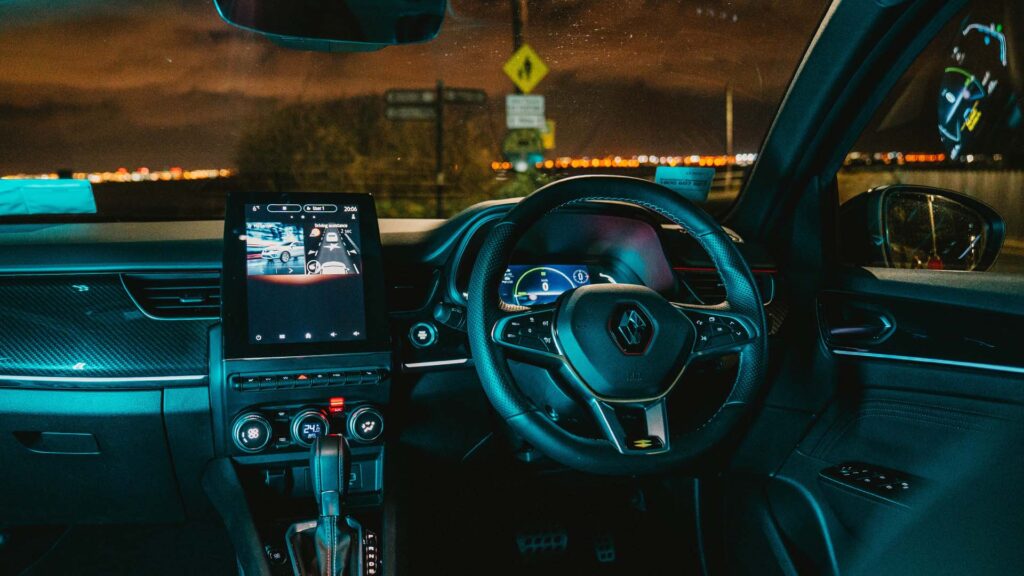
Opening the boot reveals a lengthy load space which you access over quite a high load lip with 480 litres of space on offer. In the full hybrid model you have 513 litres of space, if you go for the mild hybrid version (which doesn’t have such a large battery) the figures look pretty good compared with the 456 litres of the smaller Ford Puma and the rather stingy 377 litres of the Toyota CHR. Renault provides an adjustable height boot floor but you can’t use much of it because the underfloor jack and space saver spare wheel get in the way. Although there is plenty of space around these items for small objects which you might want to keep out of sight. Renault has forgotten a few practical touches, you don’t get bag hooks or tie down points and a ski hatch is missing too. This also means you don’t get a folding centre section for the rear bench either so if you have rear seated passengers longer items from IKEA will probably have to go on the roof. The saving grace here is the space. Retract the 60/40 split folding bench and you’ll get a capacity of 1,263 litres with the E-TECH full hybrid or 1,296 with the TCE Mild Hybrid, the Toyota CHR offers just 1,164 litres. The lower roofline of the Arkana restricts capacity compared with any boxier SUV in this class. What’s available here should be more than sufficient for most owners who’ll be pleasantly surprised by the practicality on offer from this sporty looking vehicle.
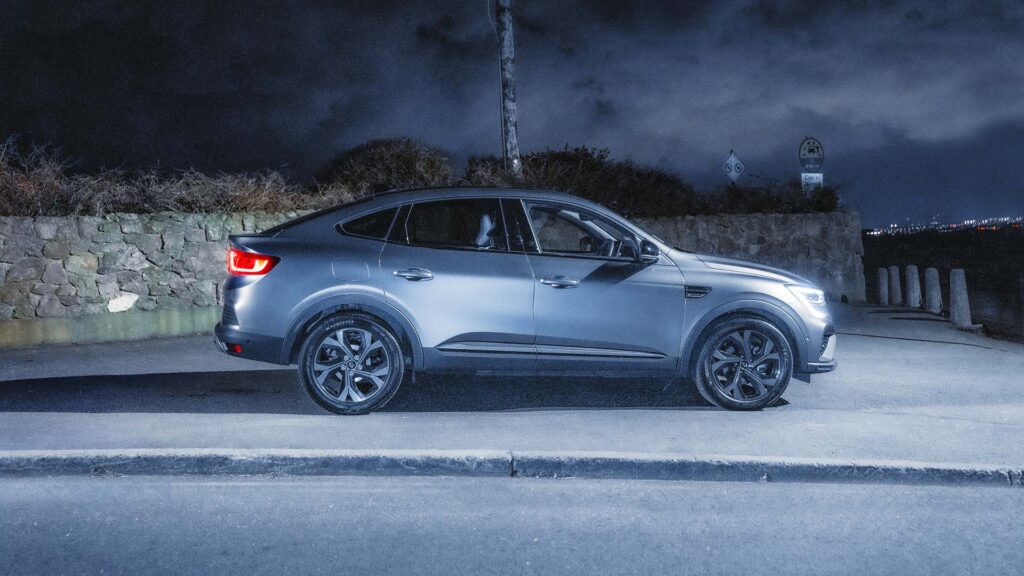
The Arkana is Renault’s first purpose-built hybrid car and the 1.6 litre hybrid E-TECH model was first offered by the brand as a powertrain option on the Clio. The Arkana uses the same 142 hp engine, except with the added curb weight of the battery to get around. The alternative TCE 140 mild hybrid unit delivers 140 horsepower as the badging suggests despite being smaller in size the 1.3 litre engine is also available in other Renault models.
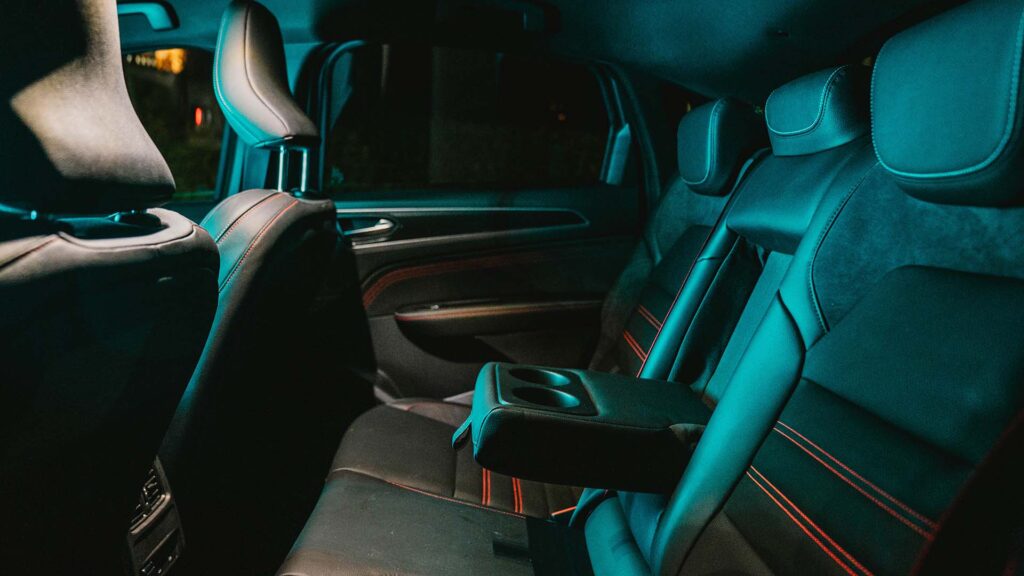
The Arkana focuses on efficiency rather than outright power. The engine is so compact that Renault has been able to pack in two electric motors. Underneath the bonnet, one sits on top of the gearbox putting out 20 horsepower and acts as a high voltage generator. This is tasked with starting the car and creating a smooth gear change. The work of assisting the engine is done by a second bigger motor which is attached to the rear of the transmission which puts out 48 horsepower and is there to help the combustion power plant propel the car once it’s underway. Both motors are powered by a tiny 1.2 kilowatt-hour lithium-ion battery pack beneath the boot floor and the whole powertrain is mated to an auto gearbox.
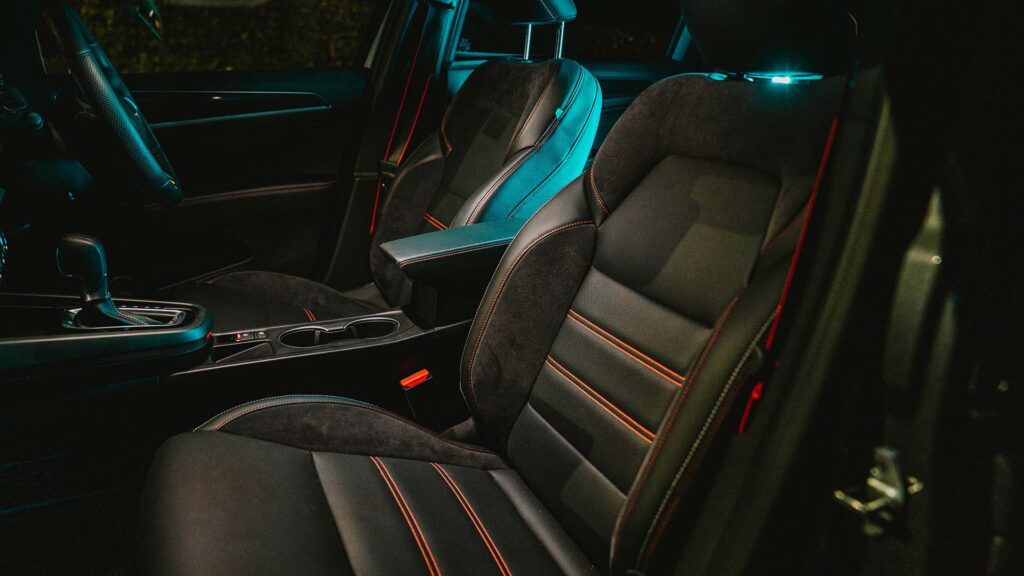
The way the Arkana drives is affected by the battery weight and the gearbox is reminiscent of a cvt auto in that there’s a delay between the engine response and actual acceleration. The petrol engine has 144 Nm of torque while the electric motor generates 205 Nm of torque with the smaller high voltage starter generator delivering an additional 50 Nm. None of the drive modes make much of a difference, with claimed performance figures of 10.8 seconds to 100 km/h on route to 172 km/h. It’s better to stick to hybrid mode which blends petrol and electric motor outputs for maximum economy or possibly in the eco setting which uses a measured mapping of the accelerator pedal and adaptive gear changing for greater frugality. In town you might want to select EV which prioritises battery electric drive up to about 44 km/h. There’s also a further brake setting to encourage electrical regeneration although lifting your right foot results in the kind of abrupt stop you’d find in a full blooded EV. The throttle has a kick down function that brings all the power plants into play at the same time, suspending ev mode. The full hybrid version gets to 100 km/h in 9.8 seconds and there are no limitations on top speed, so on the motorway you can get to the speed limit. The kind of 48 volt architecture that you find in most other mild hybrid units aren’t as restricted with lesser 12 volt tech but it works the way that these engines usually do with a mandatory auto gearbox (in this case with seven speeds mated to an integrated starter generator) which soaks up energy that would otherwise be lost in cruising or braking. This is then deployed to power the engine stop start system and to add an extra 20 Nm of pulling power under acceleration.
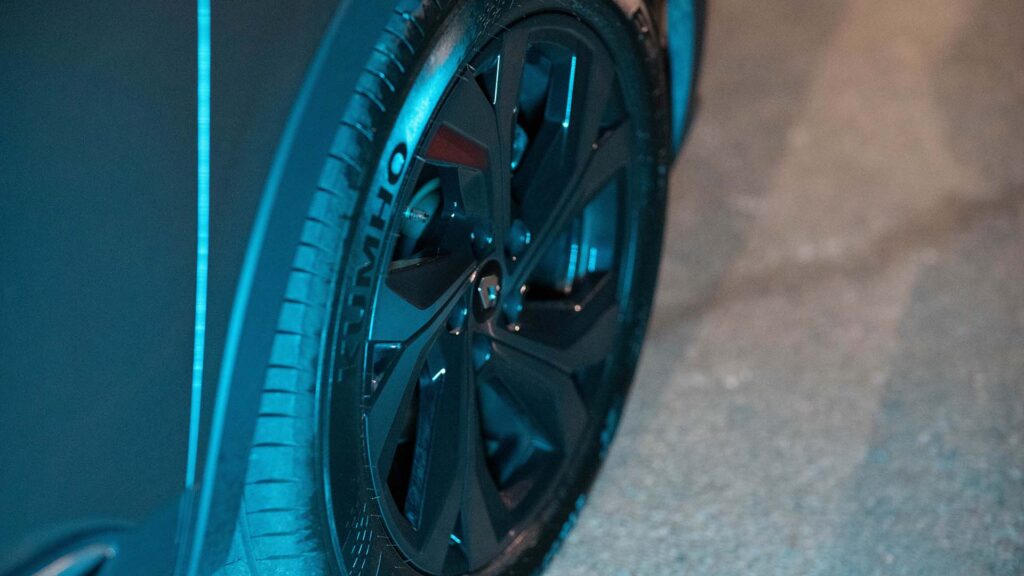
Depending on your needs from the Arkana you might want to test bumpier and urban roads feature in your test drive in it this will allow you to pass your own judgement on the rather brittle ride quality that other reviewers have complained about with this car particularly on the larger 18-inch wheels. Because its set-up is on the firm side, the Arkana handles pretty well. It’s not as agile as the Formentor, but has decent grip, not too much body lean and precise steering.
